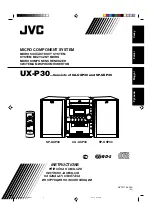
MITSUBISHI ELECTRONICS AMERICA, INC.
ST200 Series Technical Support Manual
31
January 2000
operational integrity of the site is to be preserved, basic guidelines must be observed when
installing the MT at a site. For example, site planners often issue guidelines and precautions that
are specific to a particular site, and these must be observed.
Basic Rules:
1.
No portion of any antenna, Radio Frequency Unit (RFU), or Transceiver Unit (TU)
should be placed within 12" of any computer or controller module, sensor or other
existing electronic device in the site.
2.
Wires or cabling for the MT should be routed as far from existing site cabling as possible,
and in no event should they be placed next to or be routed in parallel with the cabling for
any site system.
3.
Whenever a cable is routed through/over a metallic object, the cable must be protected
against damage with a protective sleeve.
4.
Any connection to the existing site electrical system must be done in accordance with the
customer, and only using site approved components.
5.
All connections to the site's power distribution system must be fused.
6.
After the installation has been completed, but before the site is released to the customer,
the installer must verify that the functioning of the site’s systems has not been affected by
the MT installation.
Performing a “pre-check” of the customer's site before the installation will identify any pre-
existing problems with the site. Customers are not always aware of the functional state of all
parts of their site, and it is very easy for the customer to blame the installer for (as an example) a
malfunctioning alarm control system, if the site has not been checked out before the installation
has started.
The final installation should be presented in detail to the customer. This should help eliminate
any controversy with the customer about instruments, lights and/or systems that do not operate
correctly when the installation has been completed.
6.1.2 General Installation Standards
The following list of standards will help ensure that the equipment operates properly over a long
period of time. The extra attention and care that is given initially may save time and effort in the
future.
1.
The National Electrical Code requires lightning protection for cabling between the
fixed site antenna and supporting structure (e.g. building roof). However, specific
electromagnetic pulse protection requirements vary by customer and site. The
professional doing the fixed site installation should determine these requirements with
the customer and install equipment based on a variety of open industry standards.
2.
Wherever possible, route the terminal cables and the power cable together. This
makes it easier to service the system. If one or more of the accessories are installed,
route the associated cable with the other cable if possible.
















































